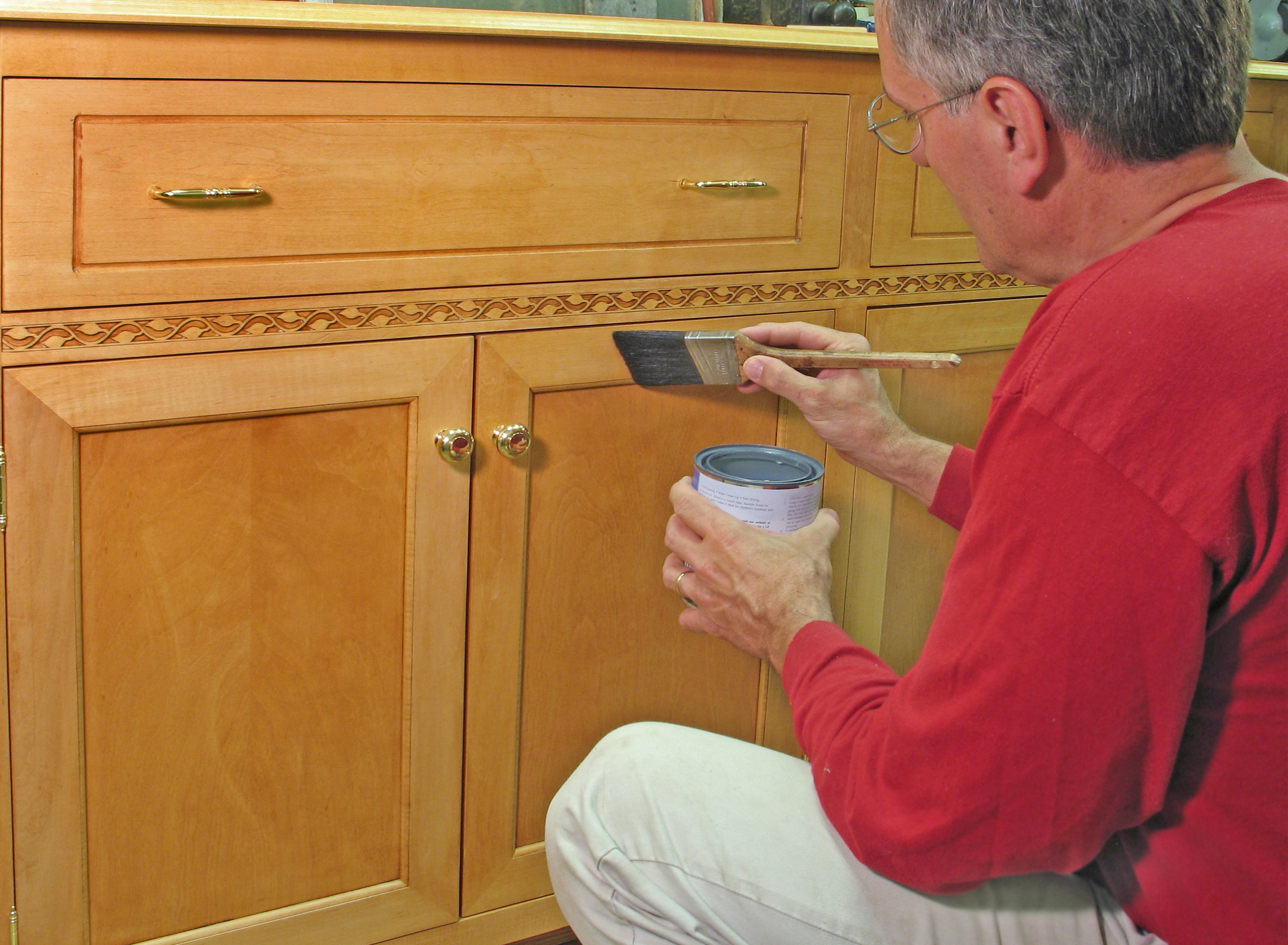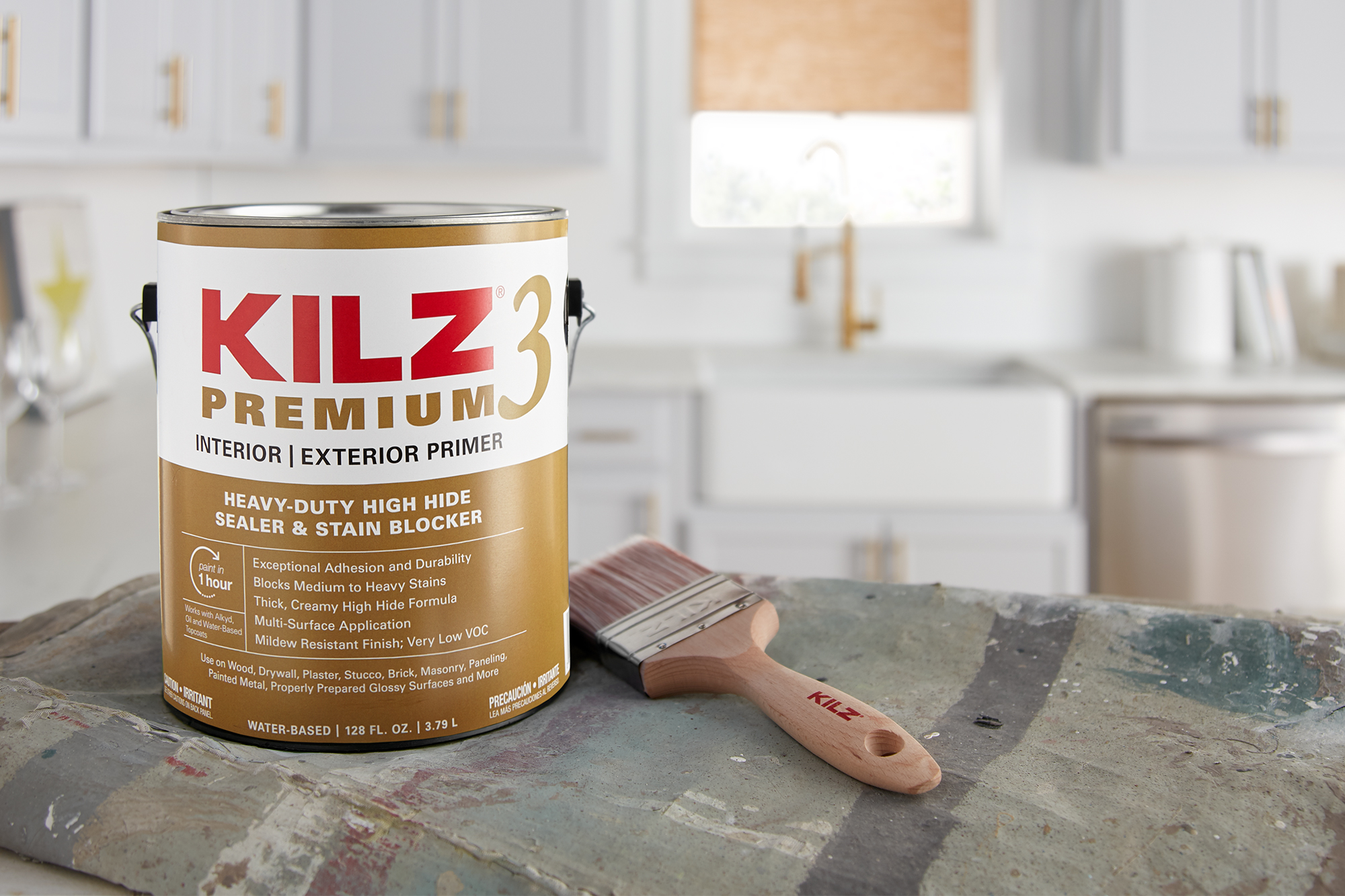Types of Primers for Unfinished Cabinets

So, you’ve got some bare cabinets staring back at you, judging your DIY skills. Don’t worry, we’ve got this! Choosing the right primer is like picking the perfect sidekick – it’ll make or break your final finish. Let’s dive into the world of primers, where oil and water (and shellac!) battle it out for cabinet supremacy!
Oil-Based Primers
Oil-based primers are the old-school champs. They’re known for their excellent adhesion, especially to porous woods like pine or oak. Think of them as the strong, silent type – they get the job done without a fuss. They also do a fantastic job of blocking stains, which is crucial if you’re dealing with knotty wood or previously stained surfaces. However, they’re high in VOCs (Volatile Organic Compounds), meaning they smell strong and require good ventilation. Cleanup is also a bit of a pain, requiring mineral spirits. They take a while to dry, but this slow drying time allows for better penetration into the wood, promoting superior adhesion. Imagine them as the reliable, slightly grumpy uncle who always gets the job done, even if he takes his time.
Water-Based Primers
Water-based primers are the modern, eco-friendly alternative. They’re low-VOC, meaning less smell and better for the environment (and your lungs!). Cleanup is a breeze with just soap and water. They dry quickly, which is great for impatient DIYers like myself. However, they might not offer the same level of stain-blocking power as oil-based primers, and adhesion can be slightly less robust on some surfaces, particularly very smooth ones like MDF. Think of them as the energetic, slightly less reliable but still very capable cousin.
Shellac-Based Primers
Shellac primers are the quirky, sophisticated cousin. They’re made from the secretions of the lac bug (don’t worry, they’re not harmed!), and they offer excellent adhesion and fast drying times. They’re great for sealing knots and preventing bleed-through, particularly in situations where you’re working with stain-prone woods. However, they’re more expensive than oil-based or water-based options, and they’re not as durable as oil-based primers. They’re also sensitive to moisture, so you’ll want to ensure a well-ventilated space.
Primer Comparison Table, Best primer for unfinished cabinets
Here’s a handy table summarizing the key differences:
| Primer Type | Drying Time | VOC Levels | Cost |
|---|---|---|---|
| Oil-Based | 6-24 hours | High | Moderate |
| Water-Based | 1-4 hours | Low | Low to Moderate |
| Shellac-Based | 1-2 hours | Low to Moderate | High |
Primer Selection Guide
Choosing the right primer depends on your cabinet material and desired finish.
For wood cabinets (solid wood, plywood):
* Paint finish: Water-based primer is a great choice for its low VOCs and ease of use. Oil-based offers superior stain blocking for knotty woods.
* Stain finish: Shellac-based primer is excellent for preventing bleed-through.
For MDF cabinets:
* Paint finish: Water-based primer, possibly with a bonding primer for added adhesion.
* Stain finish: MDF doesn’t typically take stain well; painting is usually the preferred option.
Remember, proper surface preparation is key regardless of the primer you choose. Sanding before priming helps ensure a smooth, even finish.
Application Techniques and Preparation

So, you’ve got your primers picked out, huh? Fantastic! Now comes the fun part – actually applying the stuff. Think of this as cabinet surgery, but instead of scalpels, we’re wielding brushes and rollers. Let’s get this show on the road!
Preparing your unfinished cabinets is crucial. It’s like prepping a canvas before painting a masterpiece – skip this step, and your masterpiece will look like a Jackson Pollock rejected by a toddler. Proper preparation ensures a smooth, even finish that’ll make your cabinets look like a million bucks (or at least, a few hundred).
Cabinet Preparation Steps
Before you even THINK about touching that primer, you’ve gotta get your cabinets ready. This isn’t a race, it’s a marathon of meticulousness. Take your time, and you’ll be rewarded with a flawless finish. Rushing this stage is like trying to build a house on a cracked foundation – disaster awaits!
- Cleaning: First, give those cabinets a good scrub. We’re talking dust bunnies, cobwebs, grease, grime – the whole shebang. Use a degreaser and a clean cloth or sponge to remove any dirt or residue. Think of it as giving your cabinets a spa day before their makeover.
- Sanding: Once they’re squeaky clean, grab your sandpaper. Start with a coarser grit (around 120-grit) to remove any major imperfections, then switch to a finer grit (220-grit) for a smoother surface. Don’t go crazy – just enough to even out the surface. Think of it as giving your cabinets a light exfoliation.
- Filling Imperfections: Now, for the blemishes. Use wood filler to patch any holes, cracks, or gouges. Let it dry completely, then sand it smooth. This is like giving your cabinets a little bit of Botox. It fills in the imperfections for a flawless finish.
Primer Application Techniques
Applying primer evenly is key. Uneven primer leads to uneven paint, which is a fashion faux pas in the world of cabinetry. Here are some tips and tricks to avoid a disastrous paint job.
Applying primer can be done with brushes, rollers, or sprayers, each with its own set of advantages and disadvantages. The best method often depends on the size of the project and your comfort level.
- Brush Application: For detailed work and smaller cabinets, a brush is your best friend. Use smooth, even strokes, overlapping slightly to avoid streaks. Too much pressure leads to brush marks, so go easy!
- Roller Application: Rollers are perfect for larger surfaces. Use a high-quality roller cover designed for smooth surfaces. Apply the primer in thin, even coats, working in sections. Avoid overloading the roller – too much primer leads to drips and runs.
- Sprayer Application: Sprayers offer the fastest and most even coverage, but require practice to avoid overspray and runs. Maintain a consistent distance and a slow, even motion. Proper ventilation is crucial when using sprayers.
Achieving a Smooth, Professional Finish
The goal is a perfectly primed surface, free from brush strokes, drips, and uneven coverage. Think of it as a perfectly smooth canvas, ready for the masterpiece that is your paint job.
- Thin Coats: Always apply thin coats of primer. Multiple thin coats are better than one thick coat, which can lead to drips and runs. Let each coat dry completely before applying the next.
- Even Coverage: Overlapping strokes are your friend. Make sure each section is evenly coated before moving on. If you see any bare spots, don’t panic; just go back and add a little more primer.
- Addressing Brush Strokes: If you do end up with brush strokes, lightly sand the surface with fine-grit sandpaper between coats. This will help to smooth out the surface and create a flawless finish.
- Dealing with Uneven Coverage: If some areas are thicker than others, you might need to lightly sand down the thicker areas before applying another thin coat. Patience is key here; Rome wasn’t built in a day, and neither are perfectly primed cabinets.
Top Recommendations and Considerations: Best Primer For Unfinished Cabinets

So, you’ve prepped your cabinets, you’ve chosen your primer type – now for the moment of truth: picking the *perfect* primer. Choosing the right one can be the difference between a flawless finish and a finish that screams, “I was done by someone who clearly didn’t read the instructions!” Let’s dive into some top contenders, shall we?
Best primer for unfinished cabinets – Selecting the best primer depends on your budget, the type of paint you’ll use, and the level of DIY expertise you possess (or pretend to possess). Remember, even the best primer won’t save a poorly prepared surface. Think of it like this: you wouldn’t build a skyscraper on a cracked foundation, would you? No, you’d call in the structural engineers (or, in this case, properly sand and clean your cabinets).
Recommended Primers for Unfinished Cabinets
Here are three primers that consistently deliver excellent results, balancing performance, price, and ease of use. We’ve considered reviews, testing data, and the collective wisdom of countless DIYers (and their occasional disasters). We’re not saying these are the *only* good primers, but they’re a great place to start your search.
- KILZ Original Multi-Surface Primer: This is a workhorse. It’s known for its excellent adhesion, even on tricky surfaces like knotty pine or previously painted surfaces. It’s a bit more on the pricey side, but the superior coverage and stain-blocking power often make it worth the investment. Think of it as the seasoned pro of the primer world, reliable and effective. It’s a bit like that trusty old hammer you can always depend on.
- Zinsser BIN Primer-Sealer: This is a shellac-based primer, ideal for tackling stubborn stains or odors. It’s incredibly effective at sealing in bleed-through from knots or water damage. While it has a slightly stronger odor than some water-based options, the results are often worth it. Consider it the problem-solver – the primer you call in when you have a real challenge.
- Rust-Oleum Painter’s Touch 2X Ultra Cover Primer: This is the budget-friendly champion. It provides good coverage and adhesion for a lower price than the others. It’s a great choice for smaller projects or those on a tighter budget. It’s like the dependable friend who always shows up, ready to help – just maybe not with the same fancy tools as the pros.
Ventilation and Safety Precautions
Working with primers, especially oil-based ones, requires attention to safety. Proper ventilation is crucial. Open windows, use fans, and consider working outdoors if possible. Oil-based primers release volatile organic compounds (VOCs), which can cause headaches, dizziness, and other health problems. Think of it like this: you wouldn’t want to breathe in a whole can of paint, would you? No, you’d open a window, right?
Always wear appropriate personal protective equipment (PPE), including a respirator (especially with oil-based primers), safety glasses, and gloves. Follow the manufacturer’s instructions carefully. Read the label! Seriously, read the label. It’s not just there for decoration. It’s your best friend in this situation.
